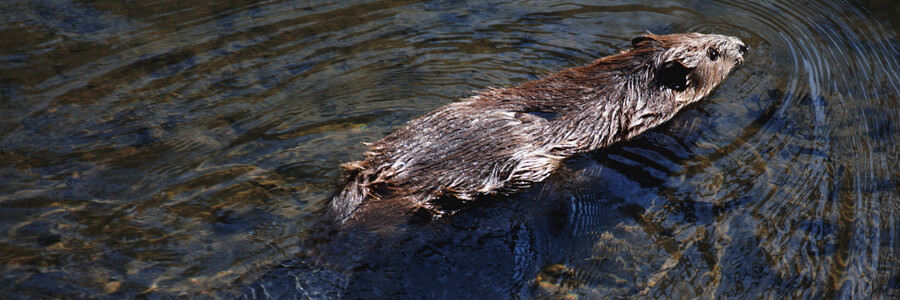Detail: Land for the beaver
More than 130 beavers in the Main-Kinzig-Kreis, Germany!
19 beavers were successfully reintroduced into the wild near the streams Sinn and Jossa in the Sinn valley, South Hesse, between 1987 and 1988. Over 130 beavers were recently counted in the region. The beavers are slowly returning and are indicators for natural meadow- and river landscape.
The beaver lives predominantly in the water. He measures between 80 to 120 cm and weighs up to 30 kg. Beaver can reach an age of about 20 years. Their incisors are large, sharp and permanently growing. Der beaver has small forepaws and large webbed hindfeet, which they use as paddles. Male and female beavers are outwardly difficult to distinguish.
Thick fur and fat layer to keep warm
Beavers do not hibernate. The thick, dense fur of the beaver (many 1.000 hairs/m²) insulates the body from icy water and is twice as thick on the stomach as on the back. The broad, flat tail is made up of mostly fatty tissue, has scales and serves as a paddle whilst swimming.
The beaver is a pure vegetarian. When there is nothing fresh to eat, beavers rely on tree bark. In warmer seasons, he eats all sorts of grasses and leaves - even thistles, nettles and reeds. Only in autumn and winter does the beaver fell trees in order to survive, mostly willows near waterbodies. The bark serves as winter stock.
Nicitating membrane serves as diving goggles
Beavers can dive for a long time. They press their ears tight to the head and close their nostrils. The nicitating membrane, through which they can see well under water, covers the eyes. As a mammal the beaver needs to catch air between dives.
The beaver's habitat is a mosaic of flowing and standing waters, meadowland and dense shrub- and softwood vegetation. A water depth of 0.5-0.8 metres is important for the beaver. With branches and twigs they build dams up to 1 metre high, which they insulate with mud and plant matter to regulate the water level. A beaver dam is a true architectural master peice of wood!
Beavers create new biotopes
The beavers' homes are called "lodges". They build the entrance under water, to be able to dive and hide quickly at times of danger. Even in winter most water bodies do not freeze to the bottom and the beaver can reach its winter stocksbelow water.
Wherever the beaver transforms the landscape by building dams, new habitat is created and biodiversity increases considerably within a short period of time.
Join us and help us to buy more land for nature!

